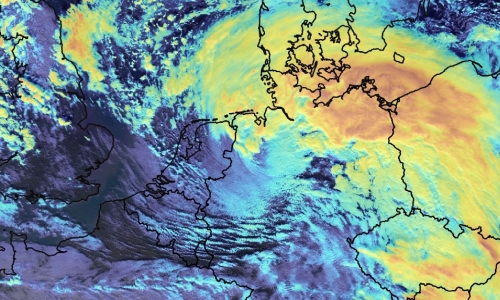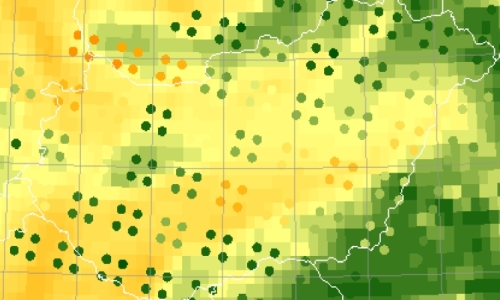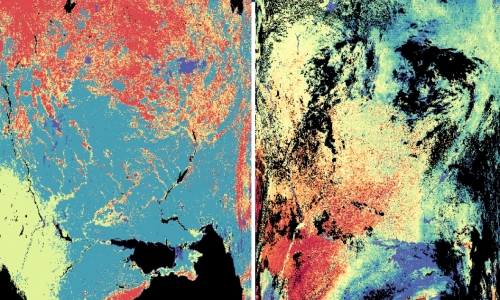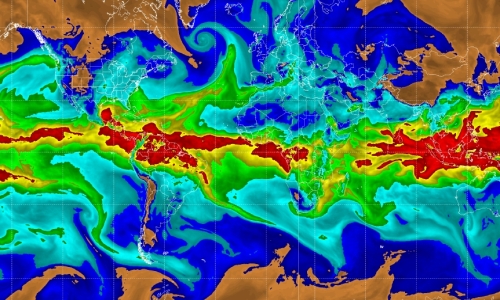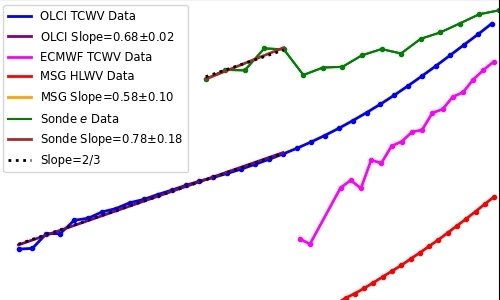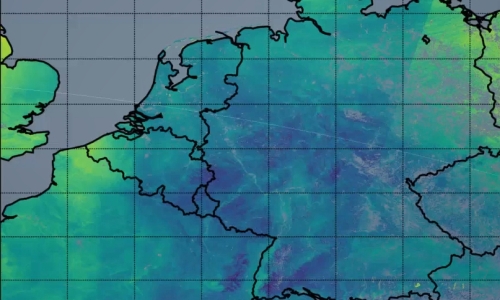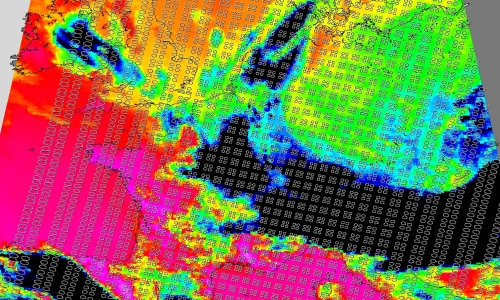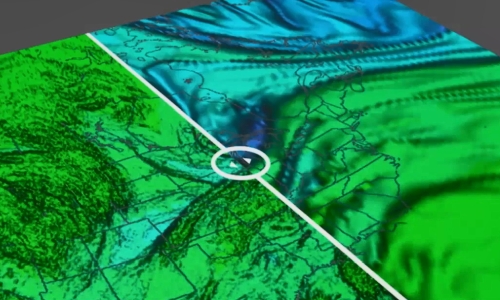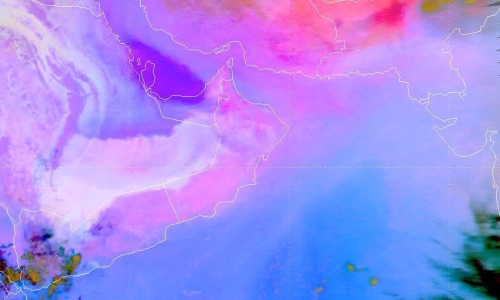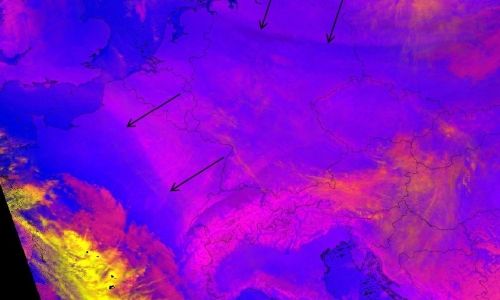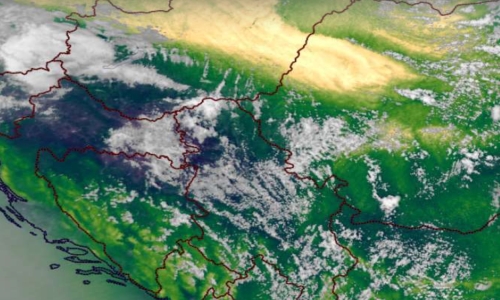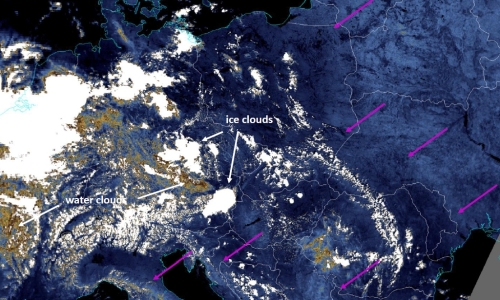Weather
Christian Herold (DWD) investigates the usefulness of IASI L2 products in nowcasting, detecting and analyzing sting jets in rapid cyclogenesis.
Strong winds southwest of the center of a Shapiro-Keyser-Cyclone are often associated with a cold conveyor jet or a sting jet. The sting jet is a strong mesoscale flow with a very high damage potential. It is a massive challenge for NWP and forecasters to correctly predict a sting jet. The question is, can IASI profiles help forecasters for a better prediction of such mesoscale severe wind events connected with sting jets? In this specific context, some case studies will be presented.
Zsofia Kocsis (OMSZ) talked about the reasons behind the experiment of merging SYNOP data with the IASI L2 profiles.
Using IASI L2 profiles, different instability indices (e.g. Lifted Index, CAPE) and water vapour content in different layers can be determined, which provides information on the convective environment. These indices were studied in several convective cases which led us to try to merge the IASI profiles and Synop measurements. In this presentation we present the reasons why we choose to combine these different measurements and we also present some of our experiences with the blended IASI product.
Phil Watts and Loredana Spezzi (EUMETSAT) give an overview of the possibilities of water-vapour retrieval of the future EPS-SG satellites.
The METimage instrument on board of the future EPS-SG satellite series opens a new era for the retrieval of water wapour imaging products at EUMETSAT. Equipped with 20 channels covering the spectral range 0.4-13μm and including both Near infrared and thermal infrared water vapour absorption bands (0.9, 6.7 and 7.3μm), METimage will allow the retrieval of operational water vapour imagery products with unprecendented resolution (down to 500m) from a low-Eart orbit. These products are expected to greatly enhance the EUMETSAT service in support of numerical weather prediction, nowcasting and climate monitoring.
In this contribution, we report the retrieval approach chosen for METimage water vapour imagery products and demonstrate it using MODIS measurements. We focus in particular on the uncertainty and quality assessment planned for these products. We aim at gathering the fundamental user feedback to achieve the state-of-the-art retrieval and validation approach, and to foster cooperation and exchange for the analysis and characterization of these products once they become available. In particular, we would like to discuss key points that have an impact on the use of our products in forecasting applications (such as the use of prior forecast information in the retrieval, the product spatial resolution and content (e.g., uncertainties, quality indicators, diagnostic parameters, etc., and the advantage of combining NIR/IR measurements, not available from previous EUMETSAT missions).
Sheldon J. Kusselson (CIRA) shows us the Advected Layered Precipitable Water (ALPW) and Total Precipitable Water (TPW) products and how to apply them for forecasting hazardous events.
Water vapor availability is a key factor in forecasting heavy precipitation. Passive microwave instruments onboard several polar orbiting spacecraft measure emission from water vapor and provide a capability to sense layers of and total water vapor in the atmosphere. Via fusion of passive microwave retrievals from five or more polar orbiting spacecraft and model wind fields, the Advected Layered Precipitable Water (ALPW) and Total Precipitable Water (TPW) products are created hourly. The new ALPW product and upgraded Total Precipitable Water products, including a percent of normal TPW product, will become operational for forecasters in 2023. In the meantime, CIRA already produces the products hourly on the internet. During the past decade applications for the ALPW and TPW products have been developed for many different types of weather events, with a focus on heavy precipitation. This presentation will highlight applications for various weather hazards such as heavy rain causing flooding and heavy snow. Case studies using applications for the ALPW and TPW products in different parts of the world, including Europe, will be presented.
Xavier Calbet (AEMET) presents his work on water vapour variability in the atmosphere and the effect of the variability on the water vapour fields in its vicinity.
Water vapor at small scales (< 6 km) behaves, on average, in an stochastic way. This behavior can be described by simple stochastic models (Gaussian Random Fields). Knowing the variability (or turbulence) of water vapor in a location, mainly via measurements, we can infer the statistical characteristics of water vapor fields in its vicinity. This model will help us in: determining whether water vapor measurements from satellites can be more or less biased, integrate different water vapor measurements coming from differing spatial scales together in a coherent way, estimate the turbulence that is potentially present in the atmosphere. Direct consequences of this concept regarding Nowcasting still need to be explored in the future.
Jan El-Kassar and Cintia Carbajal Henkel (Free University of Berlin) talk about their efforts to develop an optimal estimation algorithm for the 0.865 and 0.914 micrometer bands to retrieve a total column water product.
MTG-FCI will feature a band configuration in the rho-sigma-tau absorption band of water vapour (0.865 and 0.914 microns). We are developing an optimal estimation algorithm for these two bands to retrieve a total column water vapour product, which will be highly sensitive to boundary layer moisture.
We show preliminary results from a first prototype based on COWa (Copernicus Sentinel-3 OLCI Water Vapour) applied to spatially high-resolved data (~300m) from the Ocean and Land Colour Imager (OLCI) onboard the polar-orbiting satellites Sentinel-3.
In a next step we analyse the relationship between spatial variability metrics in the water vapour field and convective initiation over Germany, exploiting the advanced observation capabilities of current and future satellite-based imagers.
Thomas August (EUMETSAT) presents the current polar satellite sounders and makes a comparison with the capabilities of the future MTG infrared sounder
Satellite infrared sounders like IASI allow retrieving the vertical structure of the atmospheric humidity. Their measurements are exploited in synergy with the microwave (MW) sounders, when such companions are present on the same platforms as is the case in the operational EUMETSAT Polar System (EPS) programme and in the EPS-Second Generation (SG). This synergy increases the yield and quality of sounding in cloudy pixels. The future infrared sounder (IRS) onboard Meteosat Third Generation (MTG) will operate without MW companions. It will however provide unprecedented spatio-temporal sounding, with a typical ground-resolution of 7km and observations every 30 minutes over Europe.
The extensive utilisation of machine learning guarantees the provision of reliable atmospheric temperature and humidity profiles and uncertainty estimated within less than 30 minutes from sensing. We present here the characteristics of satellite thermodynamic profiles from the current and future missions and the experience made in studies with meteorological services to contribute to nowcasting severe weather events, and prepare to the future sounder missions.
Bryan Guarante (University of Wisconsin) uses a COMET course to explain the usefulness of analysing water vapour images with a goal of assessing the NWP fields.
In dynamically-active regions of the atmosphere, water vapour imagery approximates the same surface as the 1.5PVU height or pressure surface. Because of this, we can take advantage of the WV channels to find areas of mismatch between the NWP and the real atmosphere to adjust our synoptic scale forecasts.
Ivan Smiljanić (EUMETSAT) shows how the current MSG satellites can see low-level moisture and how does the moisture affect the weather.
High humidity in the air, close to the ground, could make you feel soggy in the summer but otherwise you won’t notice it. So why is it important to know all about it – is there a lot or very little moisture, where is it, what are dynamics of the moisture field? Well, moisture is really a key ingredient for many features in the atmosphere that can affect our daily lives to a high degree, from thunderstorm clouds to a fog or rime. In this session we will see how water vapour becomes a fuel for features in atmosphere to form, through a few real examples.
Hans Peter Roesli showcases the usefulness and characteristics of the 0.9 micrometer band channels, one of which will be available with MTG satellites.
At the time of refining the FCI requirements for nowcasting applications, numerical forecasts had much difficulty in handling low-level humidity (low-level forecasts rapidly dried with increasing forecast time). This was one of the reasons why the expert team for nowcasting proposed to add in MTG’s FCI.a solar water-vapour-absorbing in the 0.9-micron region (now NIR 0.914 micron) alongside the clear NIR 0.865 micron band. Although nowadays operational numerical models have overcome the moisture problem, NIR 0.914 might still find valuable applications, in particular when accounting for the frequent imaging of the same scene in daylight.
MODIS includes a clear NIR 0.8585 band and 3 bands in the 0.9-micron region: 0.936, 0.940 and 0.905 micron, with decreasing water vapour absorption. Selecting NIR 0.8585 and the weakest absorbing NIR0.905 as proxy bands for FCI some meteorological situations were investigated, where low-level humidity monitoring could have been beneficial to nowcasts. MODIS flying on Terra and Aqua usually deliver two daylight overflights of the same scene, which allows for a rough appreciation of evolution in time.
Gao&Kaufman (2003) discussed the MODIS bands in view of the MOD05/MYD05 products for Total Precipitable Water Vapour. Based on their paper MODIS imagery of the reflectivity ratio 0.905/0.8585 was produced as a proxy for FCI. Taking the ratio is simple and damps further the (minor) differences in background reflectivity between the two bands. It was found that the ratio generally varies between 0.6 (humid boundary layer) and (dry boundary layer), as already given by Gao&Kaufman.
Examples under clear European skies will show situations of old frontal zones, convergence lines or north foehn. A more complex situation of low-level moisture advection under cloudy skies over the Po Valley affords the frequent FCI imaging, in order to get the full picture of the moist-air advection.
Pieter Groenemeijer (ESSL) presents his findings in using low-level moisture proxy data from polar orbiting satellites at European Severe Storms Laboratory training events.
In preparation for MTG data, ESSL is carrying out a series of expert workshops and Testbeds in collaboration with EUMETSAT. At both event types, the increased capabilities of detecting low-level moisture from geostationary orbit, which the MTG program will enable, have received a high amount of attention. In our presentation, we will discuss a number of convective storm cases that were studied using proxy data from polar-orbiting instruments, such as MODIS. One of the ways to visualize low-level moisture is by depicting the ratio of the 0.91 and 0.85 μm channels with an intuitive color scale. We will discuss to what extent this and other proxies for low-level humidity can be used to anticipate the presence of a crucial ingredient for severe deep, moist convection...
Ivan Smiljanić (EUMETSAT) presents water vapour channels that will become available with the launch of the third generation of Meteosat satellites.
Water vapour molecules, i.e. a water gas in the atmosphere, absorbs radiation in different parts of spectrum. With present geostationary satellite, MSG, this fact is mostly utilised in the spectral region around 6 or 7 microns, i.e. in the Infra-red region. With the next generation of geostationary satellite, MTG, it will be possible to observe the processes of WV absorption in the solar part of the spectrum, namely around 900 and 1300 nm. A bit different processes of absorption, but also scattering are happening around those wavelengths – we will take a look what is exactly happening there, and how to utilise these processes to detect different features in the atmosphere.

